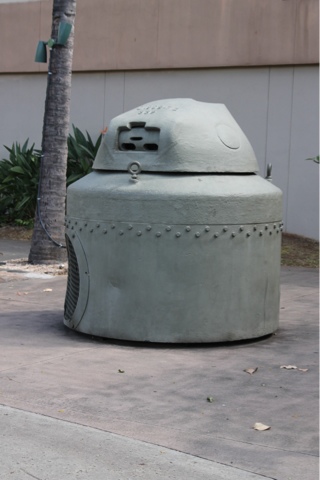The US Marine Corps has not always led the way on new weapons procurement. In the past they have often been slow to adopt newer systems long after their comrades in the US Army have done so.
Recently, the Marines have broken that trend and abandoned the 9mm Berretta M9 pistol that was adopted in the mid 1980s. Instead of a newer 9mm, they have wisely brought back the venerable old .45 cal Colt Model 1911.
The Colt has already had a sterling career that spanned eight decades. Some background first: During the Philippine Insurrection the US military became dissatisfied with their Colt Model 1892 .38 caliber revolvers. They just did not have the knock down power needed against the drugged up Moro Islamic guerillas that they faced in the Philippines. In 1904 the Army began a search for a new service pistol. Seven different designs were submitted, each chambered for a new .45 ACP (Automatic Cartridge Pistol) cartridge that was to provide the punch needed to quickly put down any adversary.
Three of the designs had promise, but by 1910 the pistol designed by famed firearms designer John Browning won out. His pistol survived a grueling two-day, 6,000 round test without a single malfunction. When the gun grew hot, it was immersed in a bucket of water to cool it down! The Model 1911 .45 began full production in early 1912.
 |
| The Author's Colt Model 1911, made in 1913 |
The Model 1911 went on to be the finest semi-automatic pistol of World War I. A few minor improvements were introduced in 1924 and the Model 1911A1 was born. Five different makers built almost 2 million 1911A1s during World War II. Production stopped in 1945, but the design was so practical and so robust, the same guns remained in service until the late 1980s. (I carried many different .45s during my Army career, but the Union Switch and Signal version I was issued while in the 1st Infantry Division was my favorite.)
The 1911A1s were phased out in the 1980s for a new high capacity 9mm Berretta. An Italian design but built in America; it never achieved any popularity with the soldiers and Marines who carried them. Malfunctions, cracked frames and scant stopping power added to the disfavor. Lessons learned in Iraq and Afghanistan gun battles prompted some Special Ops units to ditch their Berettas and buy commercial .45s to take into combat. It seems the 9mm (same diameter bullet as the old .38) did not always have the knock down power to stop a doped up al-Qaeda or Taliban Islamic terrorist. (Is this sounding familiar?)
On July 20, 2012 the US Marine Corps contracted with Colt Industries to produce as many as 12,000 new M45 pistols. The M45 has a few improvements over the old M1911A1 (tan finish, accessory rail, night sights, extended safety lever etc.) However the base design remains the same as those that came out of the Colt factory 100 years ago.
 |
| The New Marine Corps M45 Pistol |
The contract is worth 22.5 million dollars and includes spare parts and a maintenance package. $1,875 per pistol for the life of the contract! That is over 100 times more expensive than those produced during World War I ($16 average price back then.)
Now, lets see if the Army can play catch up and go back to the .45 like their Marine brothers.











